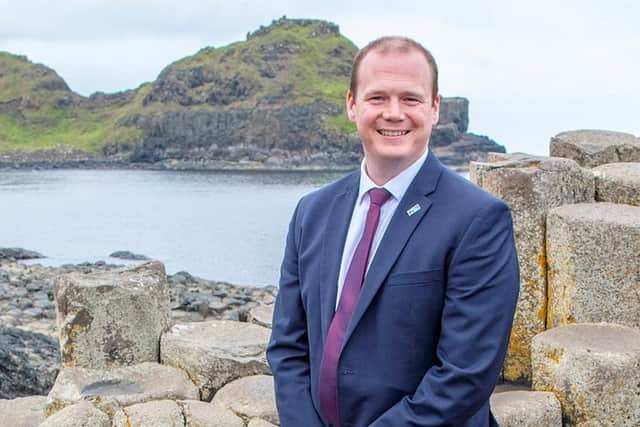Giant’s Causeway, which proves the origin of volcanic rocks during the 18th century, is selected as one of the world’s top 100 geology sites by the International Union of Geological Sciences
and live on Freeview channel 276
The Giant’s Causeway was selected by the International Union of Geological Sciences (IUGS), representing a key site in proving the origin of volcanic rocks during the 18th century.
Welcoming the announcement Mr Lyons said: “I am delighted that the International Union of Geological Sciences, an organisation representing over one million geoscientists globally has selected Giant’s Causeway as one of the world’s top 100 Global Geosites.
Advertisement
Hide AdAdvertisement
Hide Ad“The Giant’s Causeway already plays a major role in attracting visitors to Northern Ireland and this announcement can only help increase the level of attraction.”


“Tourism was one of the sectors most severely impacted by the restrictions imposed by the covid pandemic. However it has also shown itself to be one of the most resilient.
The 100 selected sites have been chosen due to their scientific value. Many have helped to develop the science of geology, whilst others are the world’s best examples of geological features and processes. The selections have been made from right across the world and include other well-known sites such as the Grand Canyon (USA), Sugar Loaf Mountain (Brazil) and Mount Everest (Nepal).
The identification of the top 100 sites was part of a project that involved more than 200 specialists from almost 40 nations and 10 international organisations. There were 181 sites nominated from 56 countries, and were evaluated by a panel of 33 international experts, including a representative from the Department for the Economy’s Geological Survey of Northern Ireland.